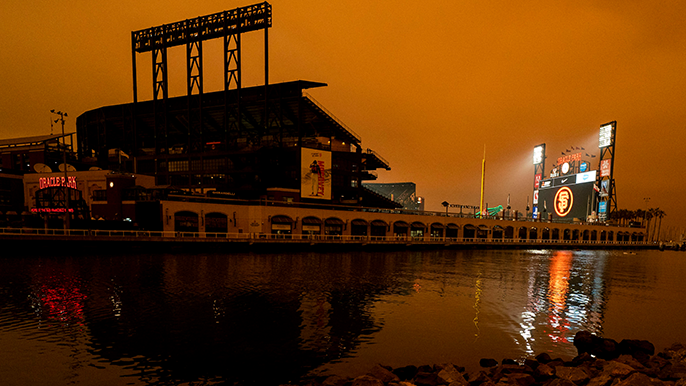
In 1994, players struck because MLB owners tried to implement a salary cap.
In 2022, MLB canceled the first two series of regular season games because, among many issues, the league and players union disagree on the competitive balance tax — what now amounts to a salary cap.
As French writer Jean-Baptise Alphonse Karr wrote almost two centuries ago: the more things change, the more they stay the same.
William B. Gould IV, now a labor relations and law professor at Stanford, referenced that maxim when thinking about the ongoing working stoppage in a phone interview with KNBR. He’s lived through the see-sawing of power between the owners and players over history.
Gould was the chairman of the National Labor Relations Board during the 1994-95 strike. He helped facilitate baseball’s return, after the two sides reached an impasse and he cast the deciding vote to authorize the NLRB to seek an injunction against MLB for unfair labor practices.
Gould doesn’t think talks will deteriorate that far this time around.
“It’s always possible at some point,” Gould said of an impasse. “But I think it’s unlikely for the foreseeable. I think what’s likely to happen here is they will get back to the bargaining table…and I think it’s likely that they will come to an agreement without going through what they went through with us 27 years ago.”
There’s no reason he’d project false optimism akin to MLB’s PR stunt; Gould is an objective observer (though the 85-year-old has been a Red Sox fan since 1946).
Still, Gould isn’t in the meetings. He doesn’t know exactly how contentious talks have been. But from what he’s seen, he said there hasn’t been anything that would amount to surface bargaining — when an employer engages in insincere bargaining — which could lead to unfair labor practice litigation.
In other words, the shutdown — despite the league’s “kabuki dance” of arbitrary deadlines and waiting six weeks after imposing a lockout to make an offer — has been lawful.
That doesn’t mean the issues at hand have easy solutions. Since the implementation of the CBT in 2003, the owners have consistently gained more in collective bargaining agreements than the players union. League revenues have skyrocketed while average player salaries have plateaued.
Management wants to hold on to those gains by keeping the status quo, while the MLBPA wants reform for a more equitable economic system. Their proposals “really reflect their respective positions,” Gould said.
Owners have saved money by building rosters around young players who haven’t hit free agency yet, manipulating service time so their homegrown stars enter the open market later in their careers, and by squeezing out veterans who may have been paid for past performance before front offices became more modernized. The union addressed these strategies with proposals like a pre-arbitration bonus for more “Super 2s,” rules encouraging teams to promote prospects earlier and a draft lottery to reduce tanking.
But take the pre-arbitration bonus pool as an example of the sides’ positions. The owners offered $30 million in their latest proposal. MLBPA was asking for $85 million. Status quo vs. making up for losses.
Despite the wide gaps in figures, it still matters that the sides are negotiating. The MLBPA and MLB spent nine straight days bargaining in Jupiter, Fla. in advance of the league’s self-imposed Feb. 28 deadline to save Opening Day. That deadline passed, and with it went the first two series of the year. Even with Rob Manfred’s “disastrous outcome” of missed games, Gould said the bargaining still bodes well.
“The fact that they both have modified their agreements suggests to me that it’s more likely than not — you just don’t know — that they will not reach an impasse,” Gould said. “And it’s more likely than not that they will reach an agreement without resorting to litigation of any kind.”
In order to get closer to a deal, Gould said, the players must remain united — which they’ve done so far. If they can do that, Gould said the owners have “plenty of room” to make further concessions on the critical issues at hand.
“The owners feel that they can scare the players because this is a new group of people who haven’t experienced all these past conflicts,” Gould said.
“I think if they show some resolve and convince the owners that they’re not going to capitulate immediately, I think the owners — the owners have plenty to give. You look at all the new revenue streams and how they’ve multiplied their revenues maybe 15 times since when we intervened in 1995, that’s a lot of latitude to play with. And if they’re convinced the players aren’t going to be there, I think there’s going to be a deal.”


